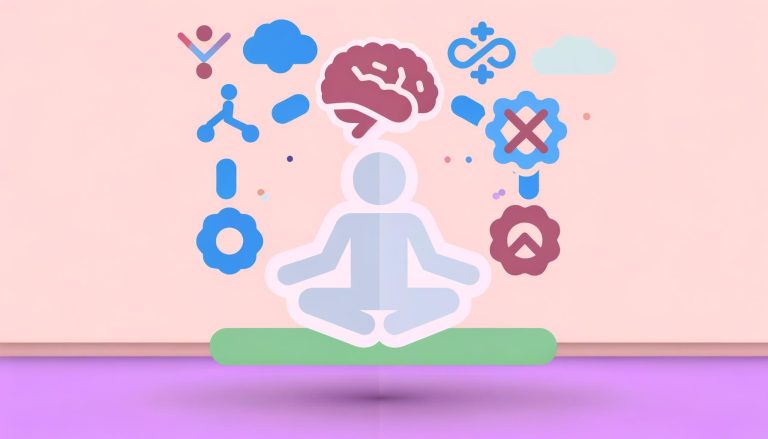As anxiety affects millions of people globally, finding effective treatments is crucial. Cognitive Behavioral Therapy (CBT) emerges as one of the most effective methods to manage and alleviate anxiety symptoms. In this article, we’ll explore what CBT is, how it works, and how it can significantly help those suffering from anxiety.
Understanding Cognitive Behavioral Therapy (CBT)
Cognitive Behavioral Therapy (CBT) is a structured, time-limited psychotherapy approach that aims to identify and modify distorted thoughts and maladaptive behaviors. It is rooted in the concept that our thoughts, feelings, and behaviors are interconnected, and changing negative thought patterns can lead to changes in feelings and behavior.
The Core Components of CBT
- Cognitive Restructuring: This involves identifying and challenging irrational or harmful thoughts and replacing them with more realistic, balanced thoughts.
- Behavioral Activation: Encourages individuals to engage in activities that bring pleasure or a sense of accomplishment, counteracting the avoidance behaviors often seen in anxiety.
- Problem-Solving: Developing practical solutions for stressful or challenging situations.
- Exposure Therapy: Gradual exposure to feared situations or objects to reduce sensitivity and anxiety response.
How CBT Works
CBT works by teaching individuals how to recognize and challenge their negative thoughts and behaviors. The therapy is typically goal-oriented, with an emphasis on the present, rather than focusing on past experiences. Key techniques used in CBT include:
- Journaling: Keeping a record of thoughts and emotions to identify patterns and triggers.
- Mindfulness: Being present in the moment to reduce the impact of negative thinking.
- Cognitive Restructuring: Reframing negative thoughts to reduce their impact.
- Behavioral Experiments: Testing out thoughts and beliefs in real-world situations.
How CBT Can Help with Anxiety
Anxiety disorders are characterized by persistent, excessive worry about various aspects of life. CBT can be particularly useful for treating different types of anxiety disorders, including Generalized Anxiety Disorder (GAD), Social Anxiety Disorder, Panic Disorder, and Specific Phobias.
Targeting Negative Thought Patterns
One of the primary ways CBT helps with anxiety is by addressing negative thought patterns. Individuals with anxiety often experience persistent, irrational fears and worries. CBT helps by teaching them how to identify distorted thoughts, evaluate their validity, and replace them with more balanced, realistic thoughts.
Reducing Avoidance Behaviors
Avoidance is a common behavior in those with anxiety. CBT helps individuals confront their fears and anxieties rather than avoiding them. Through techniques like exposure therapy, individuals gradually face their fears in a controlled manner, which can significantly reduce anxiety over time.
Improving Coping Mechanisms
CBT equips individuals with practical strategies to manage stress and anxiety. This might include relaxation techniques, time management skills, and assertiveness training. By improving these coping mechanisms, individuals can better manage anxiety-provoking situations.
Empowering Individuals
One of the empowering aspects of CBT is that it teaches self-help skills. This means that even after therapy ends, individuals have the tools and knowledge to manage their anxiety independently. This long-term benefit is one of the key reasons why CBT is highly regarded in the treatment of anxiety.
Scientific Evidence Supporting CBT for Anxiety
Extensive research supports the efficacy of CBT in treating anxiety disorders. Studies have shown that CBT can lead to significant improvements in anxiety symptoms, and these improvements are often maintained over the long term. In many cases, CBT is as effective as medication, and it can also be used in conjunction with medication for enhanced results.
Benefits and Practical Tips for Using CBT
Benefits of CBT
- Evidence-Based: CBT is backed by extensive research proving its effectiveness.
- Structured Approach: Provides a clear, goal-oriented framework for treatment.
- Short-Term: Typically, CBT is a short-term treatment, lasting from a few weeks to a few months.
- Empowering: Teaches self-help strategies that can be used long-term.
- Customizable: Can be tailored to individual needs and specific anxiety disorders.
Practical Tips for Implementing CBT
- Find a Qualified Therapist: Look for a licensed therapist with experience in treating anxiety through CBT.
- Maintain a Therapy Journal: Document your thoughts, feelings, and progress throughout your CBT journey.
- Practice Mindfulness: Incorporate mindfulness exercises into your daily routine to stay present.
- Consistent Practice: Regularly practice CBT techniques even outside of therapy sessions.
- Seek Support: Share your goals and progress with supportive friends or family members.
Conclusion
Cognitive Behavioral Therapy (CBT) offers a structured, effective approach to managing and reducing anxiety. By targeting negative thought patterns, reducing avoidance behaviors, and improving coping mechanisms, CBT empowers individuals to take control of their anxiety. The benefits of CBT can be long-lasting, providing individuals with the tools needed to maintain mental wellness beyond therapy sessions.
Sources:


